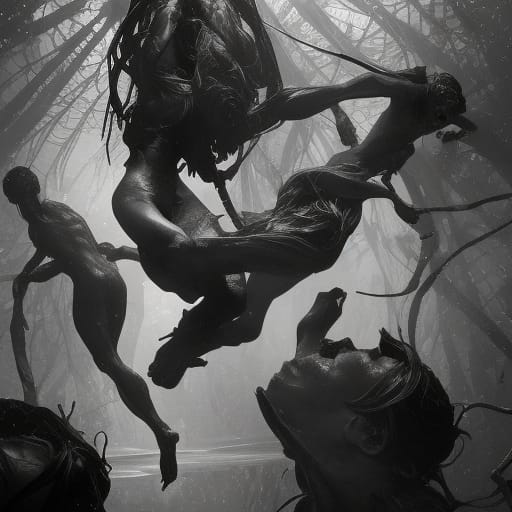Body and Embodiment in Slovak Poetry (Invitation)

Institute of Slovak Literature of the Slovak Academy of Sciences, PRI, kindly invites you to attend the conference Body and Embodiment in Slovak Poetry held on 26 September 2023 at the Institute of Slovak Literature, Slovak Academy of Sciences, Dúbravská cesta 9, Bratislava, Slovakia.
In her The Forms of the Affects (2014), Eugenie Brinkema draws a line from Spinoza to nineteenth- and twentieth- century philosophical trends to show how the body, “[l]ike the needling of gray lard through a slab of lean” (Brinkema 2014: 123), was reinserted into the centre of European theory and philosophy. In this line of thinking, the body is not thought of as a metaphysical concept, but as a body in its materiality, including its “rotting odors, viscous substances, and dark, damp regions” (ibid.). To distinguish the metaphysical concept from the reality of messy, visceral bodies, research in this direction employs the notion of embodiment to signal that it does not wish to address the body “as part of our ‘animal’ nature or, in accordance with a Cartesian approach […] as a physical mechanism” (Weiss and Fern Haber 2014: xiii). The emphasis on bodily experience has been embraced by such areas of critical inquiry as feminism, gender and queer studies, critical race theory, or disability studies and corporeality of human experience has also been explored within literary studies. An exciting prism for the interaction with literary phenomena has also been presented by crip theory which links disability studies to queer theory.
When it comes to Slovak literature, embodiment has been discussed in relation to feminist and gender studies and much less so – if at all indeed – within the framework of critical race theory, queer theory, or disability studies.[1] The last of these – a framework discussing such issues as the novel’s symbolic production of normative structures (Davis 2013) or the discursive dependence of literature on narrative prostheses (Mitchell – Snyder 2013) – has been mostly neglected by Slovak literary studies. Nevertheless – while indeed it would probably be difficult to find such a bold appropriation of identity in Slovak poetry as one encounters in the poetry of Cheryl Marie Wade: “I’m the Cripple / I’m the Crazy Lady / I’m the Woman With Juice” (1997 [1987]: 526) which, as Robert McRuer in his seminal work Crip Theory: Cultural Signs of Queerness and Disability (2006), asserts that “that crips cannot be contained” (40), the prism of disability studies has the potential to provide tools for the study of Slovak literature. One literary-critical narrative might then speak of such diverse texts as the Catholic priest Janko Silan’s poem “The Blind Sing” (Slepci spievajú): “zrak sa nám zlomil cez vyduté sklá, / sme decká vyziable a čudácke, / stratená iskra, čo sa v raji rozbleskla” (lit.: “our eyesight broke through the bulging glass, / we are emaciated and strange children, / a lost spark that flashed in paradise.”) (1995 [1936]: 106) and the poem “Kripel” (Cripple) from the second collection of the young transgender contemporary poet Richard L. Kramár: “chrbtica je os / ktorú musí každá kultúra / nejako pojednať // vypadla som / z podberáka // […] // veci ktoré sú si podobné / v prírode narastú / podobné” (lit.: “the spine is an axis / that every culture / must somehow negotiate // I have fallen / out of the landing net // […] // things that are alike / in nature grow / alike” (2021).
The conference would like to provide a platform for discussing the body and embodiment in Slovak poetry in the widest sense of the word, i.e., including translated poetry, song lyrics, or mixed and intermedia works. In addition to the outlined lines of enquiry, we will also welcome contributions on such aspects of corporeality in literature as the Western dichotomy of body-mind, theory of affects, the body and emotionality in poetry generated by AI, the issue of beauty, norm, and deviance (objectification versus testimony of identity), or the technological transcendence of the body. Inspiration for parallel lines of thought can also be found in the theoretical handling of body art, pop culture, comics, or tattoos. Making visible a denial of corporeality (e.g. on religious and spiritual grounds), its deletion would equally be of interest to us.
Selected papers will be published in the special issue of Slovenská literatúra [Slovak literature], an open access, peer-reviewed journal listed in all major databases including Web of Science and Scopus (https://www.sav.sk/?lang=en&doc=journal-list&journal_no=52).
Slovak poetry has been translated into numerous languages. A list of available translations into English can be accessed here; http://slovakliterature.com/resources.html.
To register, send the filled-in form by 31 August 2023 (below) to ivana.hostova@savba.sk.
Important dates:
Registration: 31 August 2023
Notification of acceptance: 10 September 2023
Works Cited
Brinkema, Eugenie. 2014. The Forms of the Affects. Durham and London: Duke University Press.
Davis, Lennard J. 2013. Introduction: Disability, Normality, and Power. In Lennard J. Davis, ed. The Disability Studies Reader. New York and London: Routledge, 1-14.
Kramár, Richard L. 2021. The grasping instinct. Bratislava.
McRuer, Robert. 2006. Crip Theory. Cultural Signs of Queerness and Disability. New York and London: New York University Press.
Mitchell, David – Snyder, Sharon. 2013. Narrative Prothesis. In Lennard J. Davis, ed. The Disability Studies Reader. New York and London: Routledge, 222-235.
Silan, Janko. 1995. The Collected Works of Janko Silan, Volume 1. Ed. Július Pašteka. Bratislava.
Spišiaková, Eva. 2021. Queering Translation History. New York and Oxon: Routledge.
Weiss, Gail and Honi Fern Haber. 1999. Perspectives on embodiment: the intersections of nature and culture. New York and London: Routledge.
Wade, Marie Cheryl. 1997. “I Am Not One of The.” In: The Disability Studies Reader, ed. by Lennard J. Davis, 256.
[1] Research taking into consideration tools provided by queer theory – although realised on the corpus of Slovak and Czech translations of Shakespeare, not on texts originally written in Slovak – has recently been attempted at by Eva Spišiaková (2021).
 Contact
Contact SK
SK
